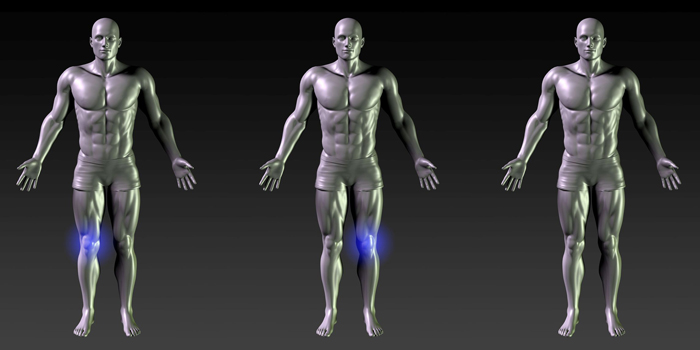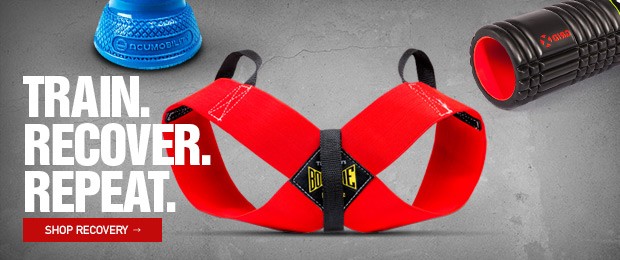
As you know, ACL injuries are a part of sports. Unfortunately, they are going to happen. We deal with three to five a year. Some are contact-related, but most are not. It's very frustrating because prevention is a huge part of the training philosophy. Sometimes a kid just puts their foot down wrong or has to move (react) in a way that doesn't agree and there's a pop. Every time it happens (any injury), it makes my stomach churn. I understand it's part of the deal in sport, but it kills me every time.
Here's what the head athletic trainer and I have come up with as part of our rehabilitation protocol for athletes with ACL injuries. First, the athlete is rehabbed in the training room exclusively. At a certain point they are released to me (training room and strength and conditioning) and we start the next part of the process.
RELATED: Programs to Stimulate Size and Strength Gains
Before I show you what we do, I have to mention that our doctors (team doctors for the Cincinnati Reds, so they're really good) use patellar tendon grafts when they repair ACL's (not hamstring grafts). This slightly changes the rehab process. The issues you run into with patellar grafts are usually patellofemoral tendonitis and improper tracking of the kneecap due to a lack of quad strength. Not a big deal at all.
We train these kids three days per week with very basic exercises.
Day 1
General Warm-Up/Dynamic Stretch
Extended Specific Warm-Up
Four-Way Hip Machine:
- 2x10 Flexion
- 2x10 Extension
- 2x10 Adduction
- 2x10 Abduction
TKE: 2x10
Plank: 2x30 seconds
Hip Extension: 2x10
Dumbbell Squat Progression:
- Week 1 — 5x5
- Week 2 — 5x6
- Week 3 — 5x8
After three weeks we decide whether or not to put the athlete on a barbell. The goal for men is to be using 75-pound dumbbells on the third week, and for women to be using 50-pound dumbbells on the third week.
Band Hip Extension (Pause at Top):
- Week 1 — 5x5
- Week 2 — 5x6
- Week 3 — 5x8
RDL:
- Week 1 — 5x5
- Week 2 — 5x6
- Week 3 — 5x8
Step-Ups:
- Week 1 — 5x5 each side
- Week 2 — 5x6 each side
- Week 3 — 5x8 each side
Leg Press (Concentric Bilaterally, Eccentric Unilaterally): 3x8 each side
Stability Ball Leg Curls: 2x10
Upper Body Push/Pull
Day 2
General Warm-Up/Dynamic Stretch
Extended Specific Warm-Up
Four-Way Hip Machine:
- 2x10 Flexion
- 2x10 Extension
- 2x10 Adduction
- 2x10 Abduction
TKE: 2x10
Plank: 2x30 seconds
Hip Extension: 2x10
Dumbbell Deadlift Progression:
- Week 1 — 5x5
- Week 2 — 5x6
- Week 3 — 5x8
After three weeks we decide whether or not to put the athlete on a trap bar. The goals are the same as above with the dumbbell squat: 75-pound dumbbells for men on the third week, and 50-pound dumbbells for women on the third week.
Hip Extension with Medicine Ball Squeeze:
- Week 1 — 5x5
- Week 2 — 5x6
- Week 3 — 5x8
Rear-Foot Elevated Split Squat (RFESS):
- Add dumbbell or Airex Pad
- Week 1 — 5x5 each side
- Week 2 — 5x6 each side
- Week 3 — 5x8 each side
Back Extension or Reverse Hyper on GHR:
- Week 1 — 5x5
- Week 2 — 5x6
- Week 3 — 5x8
Leg Press (Concentric Bilaterally, Eccentric Unilaterally): 3x8 each side
Stability Ball Leg Curl: 2x10
Upper Body Push/Pull
Day 3
- Repeat Day 1
The goal is to rebuild muscle mass, build general strength, and progress the athlete to using the barbell on main lifts. The training staff and I meet weekly (sometimes after each workout) to decide how the next week or next workout will progress.
The next phase is very similar to how it's set up. The only real changes are the addition of the barbell (squat, deadlift) and the increase in difficulty of the single-leg movements (i.e. for the RFESS adding an Airex Pad under the foot to create some imbalance or holding a dumbbell to add some weight to the movement). This decision is made by the athletic trainer.
Next, I'll post the following phase so you can see the differences we hope to use as the athlete progresses.











2 Comments